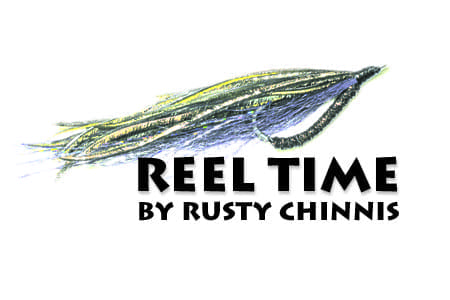Fly fishing is a sport that rewards the angler who carefully considers his prey and pays attention to the conditions and terrain that they inhabit. For anglers who regularly fish the flats, potholes are a prime area where every species of inshore fish can be targeted. Potholes provide an advantage to both the angler and the fish that can be exploited to the angler’s advantage. Potholes are generally defined as clear sandy depressions in grass flats that are devoid of vegetation. Their contours attract both fish and the prey they feed on. In reality, of course, most potholes are a combination of sand and grass. If you carefully examine them, you’ll find sand in the deepest section and grass on the borders.
Fish that take up station in these depressions are often found on the grass perimeter where they are less visible to prey. Quite often fish will wander between holes, staying just inside the edges or seams. At other times they can be seen right over the sand in the middle of the hole.
Not all potholes are created equal. Some will be almost perfectly round and shallow, while others are oblong and deep. Many of these depressions are man-made, but others are created by tidal action or even scouring by boats. Extreme low tides are excellent for scouting areas to fish. When the bottom is exposed the topography can be closely examined. Look for birds feeding on a flat with potholes. The same food they’re feeding on will attract game fish when the flat is covered with water.
Potholes can be fished either from the boat or wading. If the water is clear, fish on a shallow flat can be very spooky. Gin clear water in the winter and spring often necessitates getting into the water for a stealthier approach. When fishing from a boat, a long accurate cast is a real asset. There will be times when the wind is up and the water is off color and a cast of 40 feet or less will be all that’s required.
More often than not, an accurate 60-plus-foot cast will be needed for any measure of success.
When poling a flat, both the angler and the guide must be as quiet as possible. It’s important to make sure the pole doesn’t hit the side of the boat and enters and exits the water without making a splash. Pole extremely slowly in very shallow water as fish are sensitive to the pressure wave a boat pushes.
Many anglers are not aware, but simply moving your feet on the deck or platform can spook fish. Another mistake rooky anglers make is rocking the boat with their casts. When fish are spotted, take time to plan your attack and don’t let a high waving rod alert your prey to your presence. Keep the rod low and behind you so you can launch a quick side arm cast.
As you scan the flats and potholes, pay attention to any movement on the periphery of your vision. Fish that are stationed over grass on a pothole may give their presence away with only a shadow or subtle movement of their mouth or fins.

Wading gives you an advantage but a stealthy approach is equally as important. Small flats with potholes can be completely blown if you motor too close, slam hatch lids, or toss an anchor. Advance quietly, poling at least the last 100 yards to the area you intend to fish. Stakeout or anchor well away from the action. Slip into the water and approach potholes slowly. Move too fast and your body will create a pressure wave that the fish will sense.
If the visibility isn’t great, or you’re fishing early or late, and can’t see fish, target the edges where grass and sand meet. The edge seams are perfect ambush spots for the predators you’re targeting. Start with presentations about 2 feet outside the sandy area.
Make sure you target the deep grassy ends of the potholes. These areas can be very productive and always warrant a couple of casts. After working the edges of the holes and the seams, begin casting into the sandy areas. Fan the hole with casts to cover them completely and vary your retrieve. If a quick strip doesn’t produce, try slowing down and working the fly close to the bottom.
Next week we’ll look at some additional strategies and see how conditions in the winter can improve your odds as we move into spring.
More Reel Time:
Reel Time: New dimensions in trolling motors
































